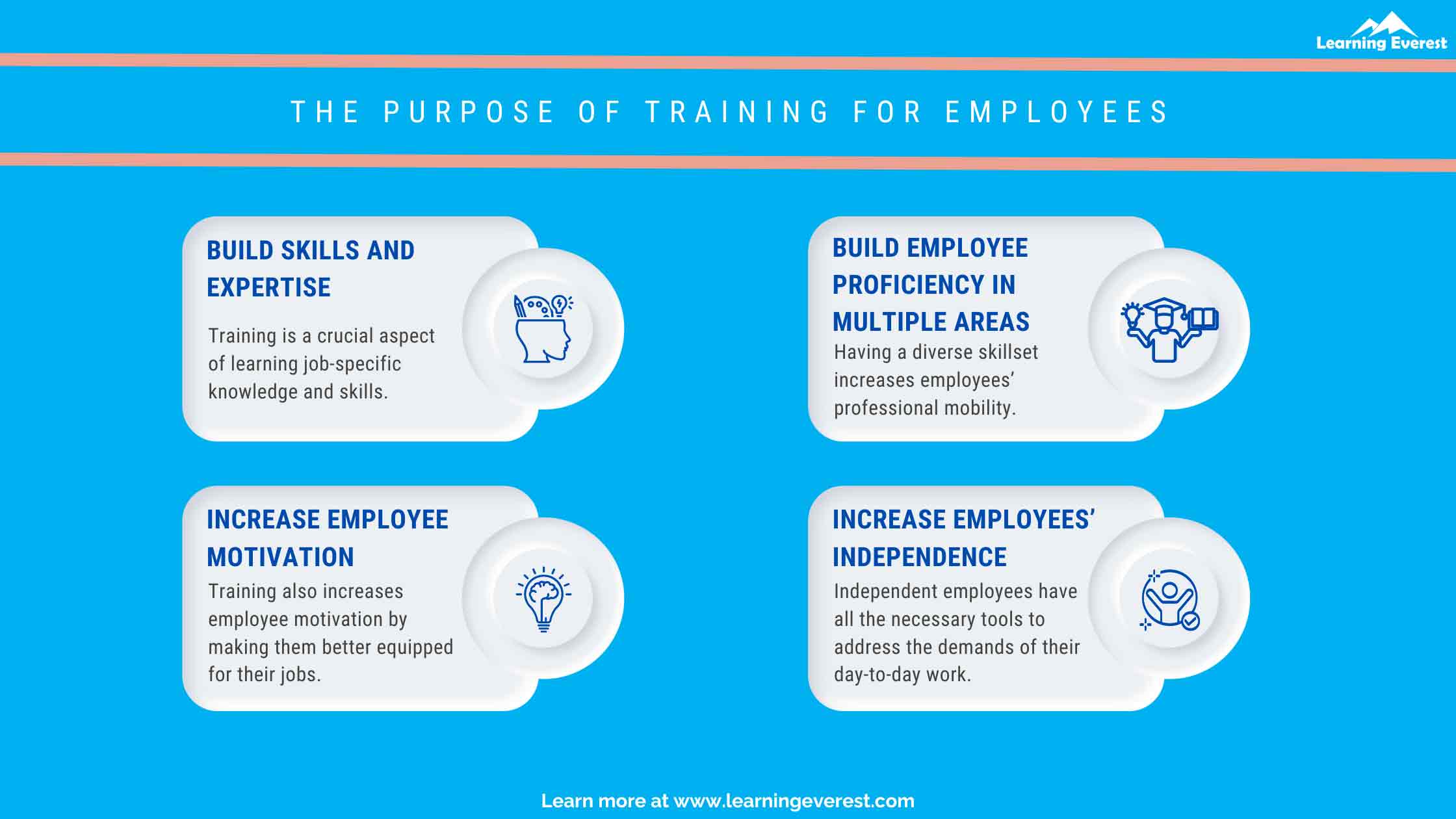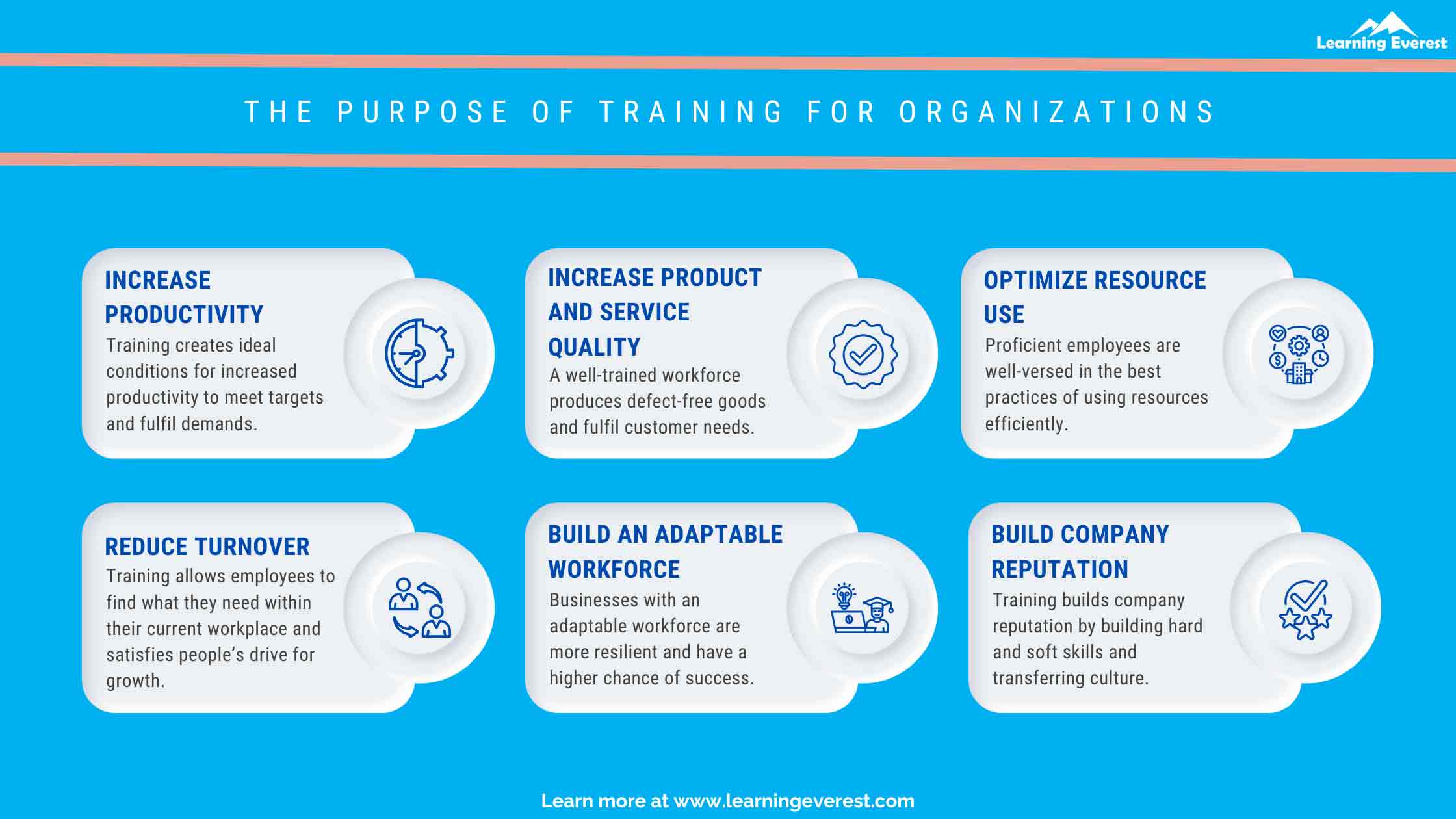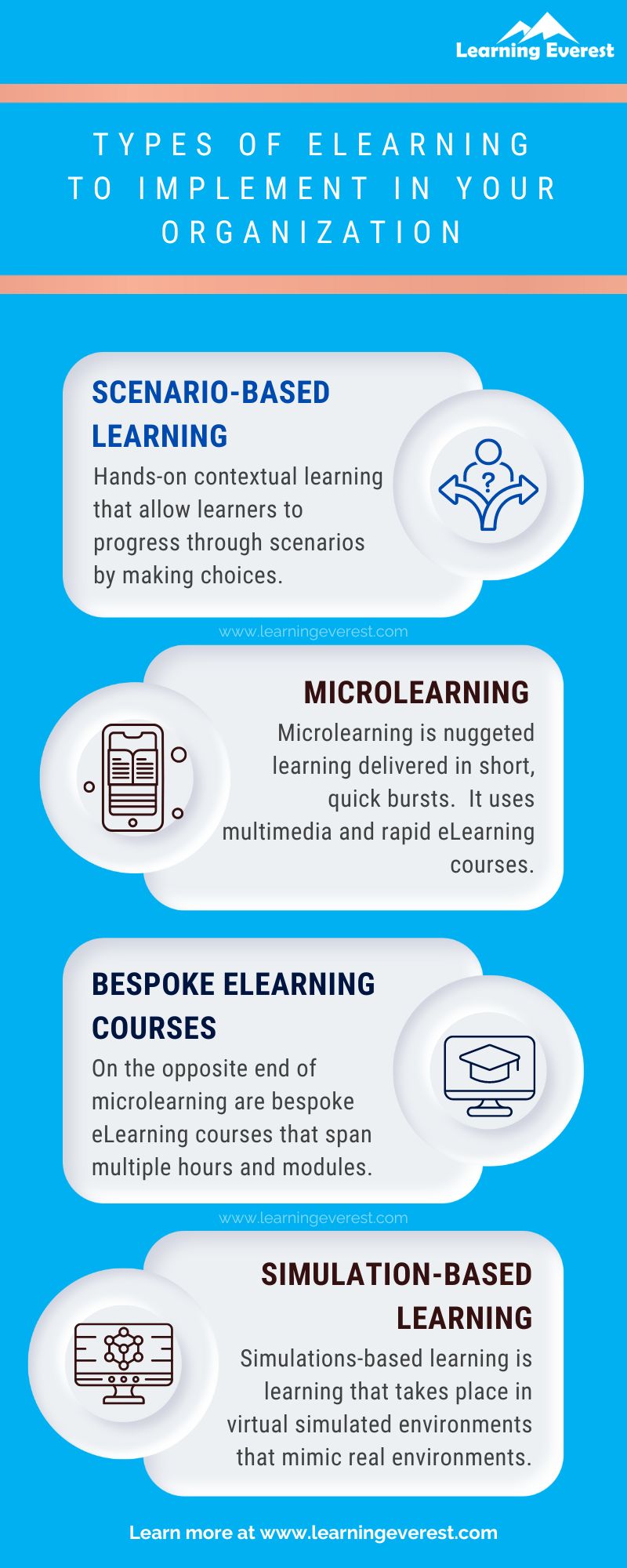In today’s organizations, the purpose of training is to maintain a skilled workforce for maximum productivity. Training plays a crucial role in the success and sustainability of businesses and is an important factor for achieving tangible outcomes. However, the purpose behind training is often looked at from a one-sided lens. This article will explore what training means for learners and businesses. Additionally, it will also cover different types of training organizations can implement to achieve specific goals.
At its core, training is a solution to an organizational problem. These problems are diverse, making the purpose of training different in different cases. An effective training solution is one that targets the need(s) accurately.
The Purpose of Training for Employees
Careers are a source of livelihood, personal fulfilment, and growth for individuals. Hence, the general purpose of training for employees is to feel prepared and find meaning in what they do.

The Purpose of Training for Employees
Build Skills and Expertise
The primary purpose of training for employees is to become proficient at their roles. Training is a crucial aspect of learning job-specific knowledge and skills. It also provides practice opportunities, contextualizes the work, and builds employee confidence.
Consistent training also lets employees stay up to date with industry trends and demand, making them more innovative and keeping them ahead of the curve. This is not only a significant benefit for individual employees, but also an asset to organizations, enabling them to quickly adapt to shifts and changing demands.
Build Employee Proficiency in Multiple Areas
Another purpose of training for employees is to diversify their skillset and build expertise in multiple areas to prevent professional stagnation. Having a diverse skillset increases employees’ professional mobility and can also contribute to greater employee retention through internal job transfers, etc.
Increase Employee Motivation
Training also increases employee motivation by making them better equipped for their jobs. The forward momentum and push that it creates is necessary to increase employees’ sense of productivity and growth on the job.
Increase Employees’ Independence
Another purpose of training is to increase employees’ independence on the job. Independent employees have all the necessary knowledge, skills, and tools to address the demands of their day-to-day work. They are effective problem solvers who are less likely to run into issues that require external intervention, making their workflows smoother and quicker. A network of independent employees makes for an efficient organization where each individual is self-sufficient in their role. Self-sufficiency and independence also reduces friction and fosters constructive teamwork.
The Purpose of Training for Organizations
For organizations, training is a vital enabler of productivity, retention, and business growth. Additionally, training is a massive investment, which can cost businesses up to $1,252 on average, per employee (2016 State of the Industry Report). Hence, it is crucial that the purpose of training programs is well-defined to create targeted interventions that address underlying needs and conditions to produce measurable impact.

The Purpose of Training for Organizations
Increase Productivity
Echoing back to the purpose of training mentioned in the previous section. Training builds skills, competence, and capabilities, allowing employees to stay up-to-date and innovative. These factors create ideal conditions for increased productivity that allow the business to meet targets and fulfil demands.
Increase Product and Service Quality
Quality is a crucial purpose of training. The quality of the products and/or services a business offers define their image, attract and retain customers, and build trust. A well-trained workforce produces goods that are free of defects and services that fulfil customer needs.
Optimize Resource Use
Along with maintaining the quality of products, training also helps optimize resource use. It prevents waste since proficient employees are well-versed in the best practices of using resources efficiently and follow through on it.
Reduce Turnover
Another major purpose training serves is to reduce employee turnover. One of the most cited reasons for employees leaving jobs is the lack of training opportunities, clearly indicating that employees want to learn at the workplace. Training allows employees to find what they need within their current workplace and satisfies people’s drive for growth.
Build an Adaptable Workforce
Another important purpose of training is to build a workforce that is adaptable and resilient. In today’s markets, changes and shifts are often quick and require quick adjustment. Businesses that can achieve this have higher chances of success. Training is a cornerstone for keeping up with market trends.
Build Company Reputation
Lastly, training helps build the company’s reputation. It can be used to teach soft and hard skills, both of which contribute to company perception in the eyes of clients, customers, and competitors. Hard skills training ensures the maintenance of performance standards. Soft skills training, on the other hand, helps maintain positive relationships with stakeholders and the industry. Additionally, training is a crucial tool for transferring company culture and aligning employees with it.
Types of Training to Implement in Your Organization
There are different types of training you can implement to fulfil the different purposes of training. Identifying which training type best fits your needs and context requires careful analysis and consultation from seasoned L&D experts, whether in-house or outsourced. Some common training options used in workplaces are:
eLearning Solutions
Scenario-Based Learning
Scenario-based learning is hands-on contextual learning that allow learners to progress through scenarios by making choices. These choices change the outcomes of the scenario, teaching learners important information in the process. It is a great way to build actionable skills that can easily be applied in the real world.
Microlearning
Microlearning is nuggeted learning delivered in short, quick bursts. Microlearning uses a variety of resources from infographics, PDFs, podcasts, and other digital multimedia, to full-fledged courses developed on authoring tools. Microlearning facilitates learning in the flow of work, and can be a great standalone or supplement learning tool. It is ideal for deskless workforces. Microlearning is a good fit for refreshers or non-complex content, as highly technical learning cannot be delivered in short sessions.
Bespoke eLearning Courses
On the opposite end of microlearning are bespoke eLearning courses that span multiple hours and modules. These can be simple click-next courses or highly interactive learning experiences with activities, gamification, etc. Bespoke eLearning courses are a better fit for complex subject material and can integrate a wide range of multimedia, from images to videos to enhance the learning experience.
Simulation-Based Learning
Simulations-based learning is learning that takes place in virtual simulated environments that mimic real-world environments. It is the best tool for familiarizing learners with their job’s context, tools, interfaces, and environments in a safe, risk-free manner. Learners can explore simulations, practice essential skills and processes, and make mistakes without creating real-world consequences. Simulations, thus, help build learners confidence and proficiency in controlled environments so that they can perform without errors at the actual site of the job eventually.
In-Person Solutions
Instructor-Led Training
In instructor-led training, a trainer guides the session and divulges information to learners. Instructors use teaching aids and facilitator guides to structure sessions and learners are provided with learning resources such as handouts, workbooks, textbooks, etc. Instructor-led training has been a staple in corporate training. It allows for real-time interaction between learners and facilitators, making sessions engaging and rich.
Shadowing and Co-Worker Training
Shadowing and co-worker training are methods where a less experienced hire observes colleagues or veterans doing the job. Shadowing facilitates observational learning as well as consistent feedback from the more experienced mentor, making it a highly social and personalized learning approach. Shadowing can make transitions easier for new hires or transfers, as well as give a new joinee their first connection at the workplace.
Infographic

Types of eLearning to Implement in Your Organization
Knowledge check!
Frequently Asked Questions (FAQs)
What is the purpose of training?
The purpose of training can be looked at from the perspective of employees or employers. For employees, the purpose of training is to build skills, expertise, and proficiency, increase motivation, and increase independence. For employers, the purpose of training is to improve productivity, improve the quality of products and services, optimize resource use, reduce turnover, become adaptable, and improve brand image.
What are the benefits of training?
Training helps organizations stay on top of industry changes and trends. It also helps build client and consumer trust and loyalty by improving the output of the business. Ultimately, training helps firms achieve business goals.






